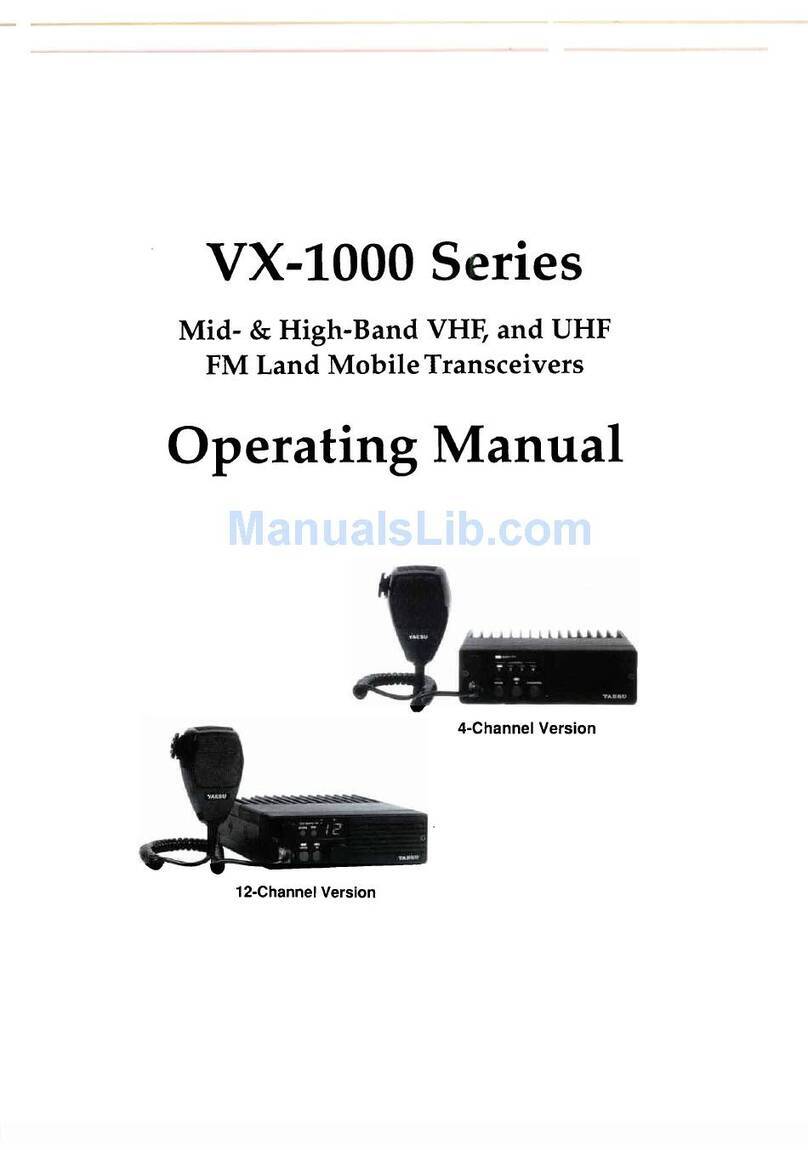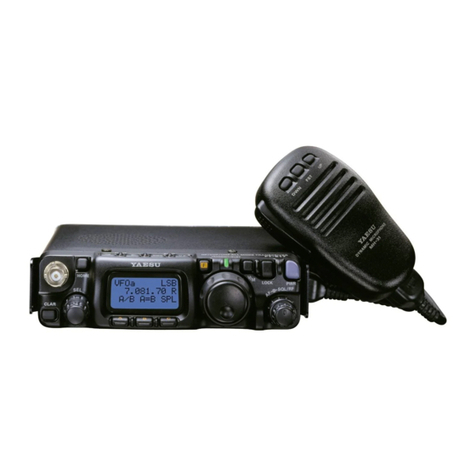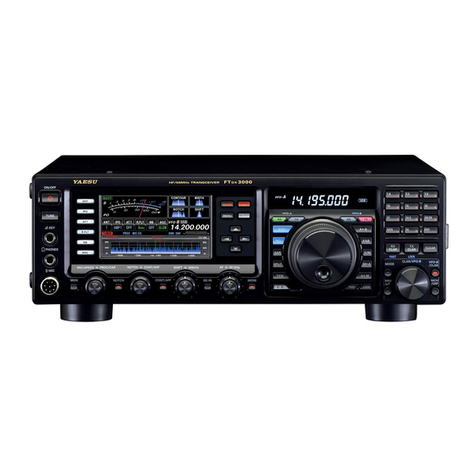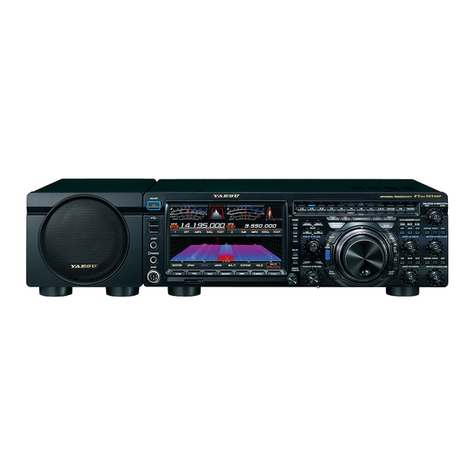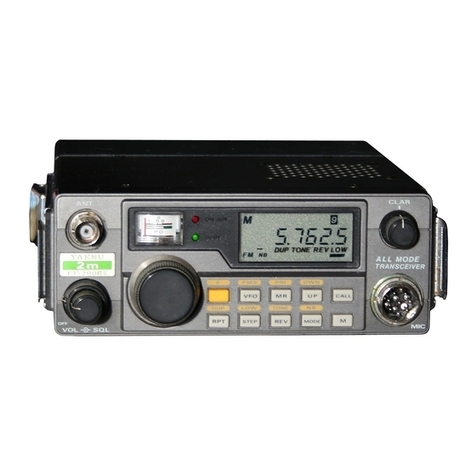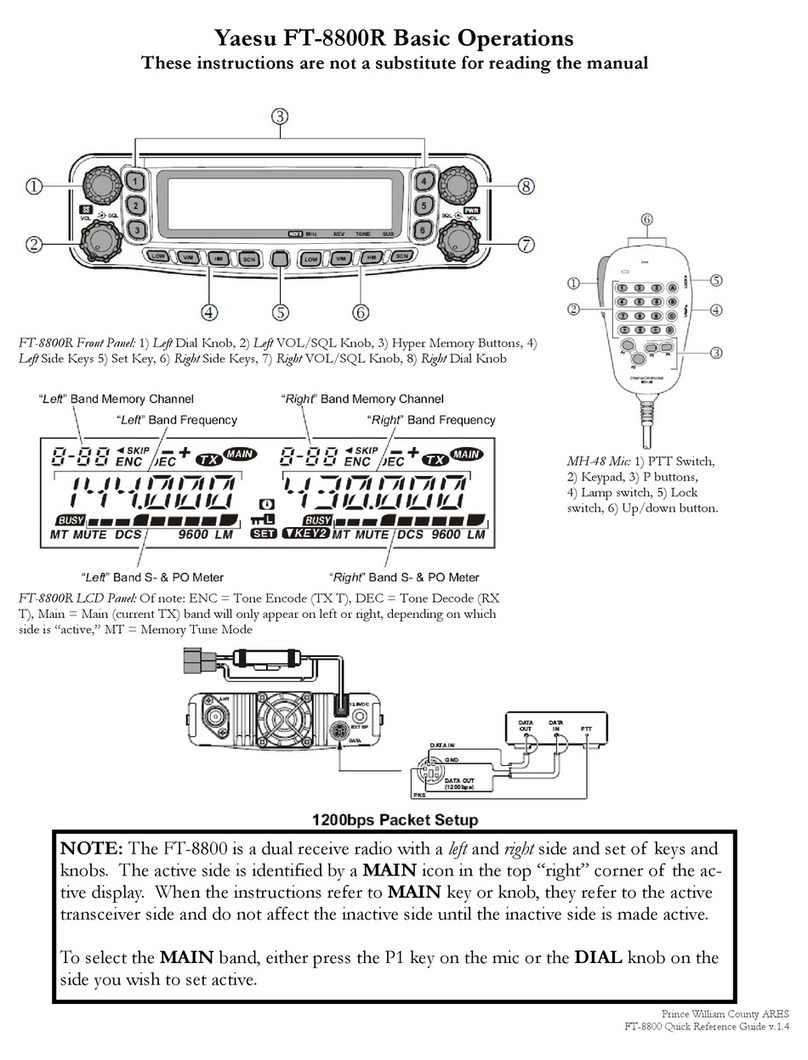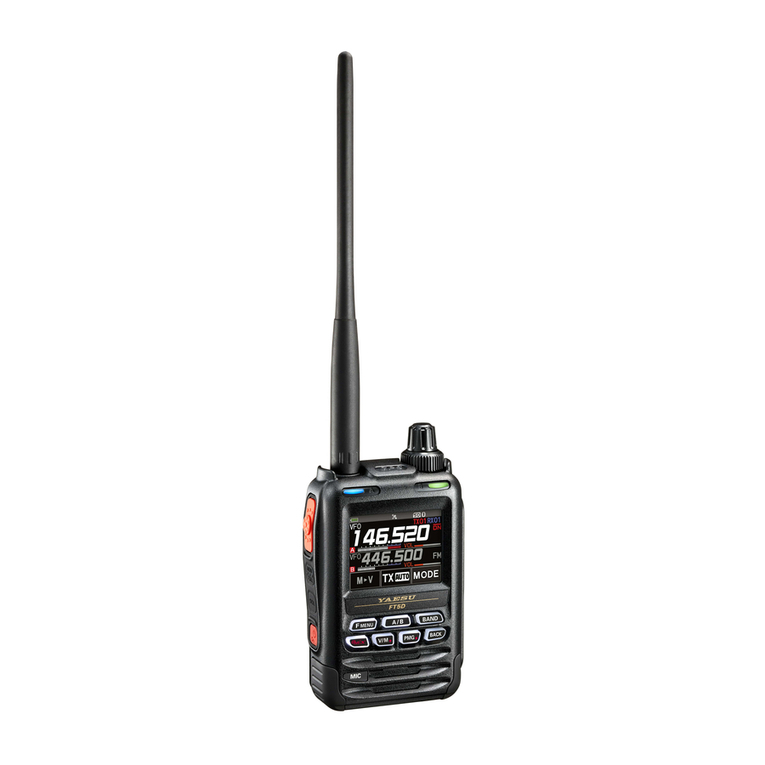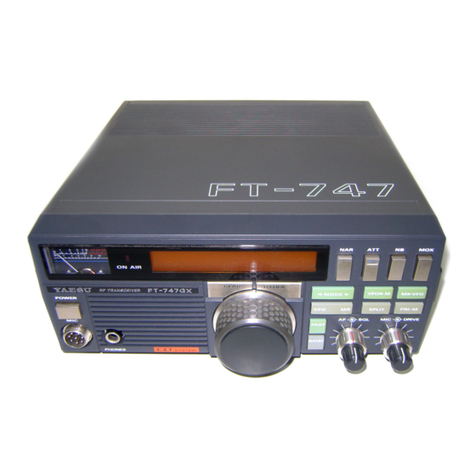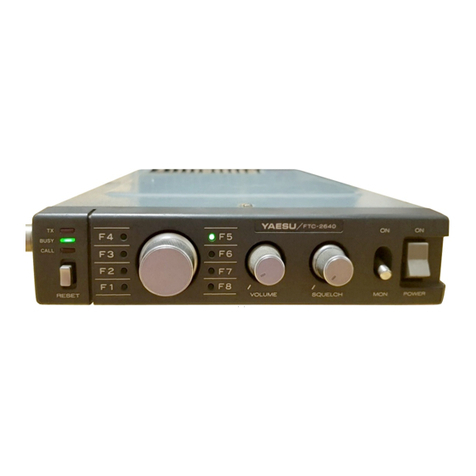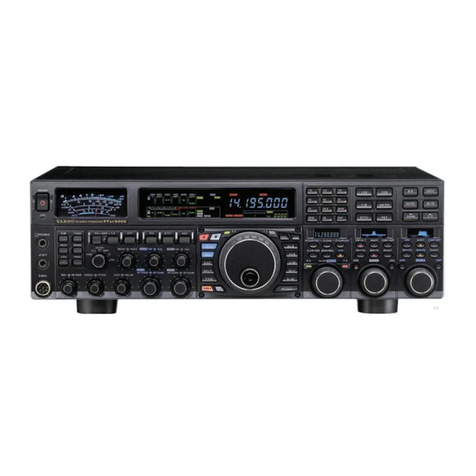
2
Table of Contents
General Description........................................4
Safety Precautions .........................................6
Accessories & Options ...................................8
Supplied Accessories ........................................ 8
Available options ............................................... 8
Installation and Interconnections....................9
Antenna Considerations .................................... 9
Antenna and Power Cable Connections ........... 9
Microphone, Headphone, Key, Keyer
and FH-2 Connections .................................... 10
Linear Amplier Interconnections .................... 11
VL-1000 Linear Amplier Interconnections.. 11
Interfacing to Other Linear Ampliers .......... 11
Rear Panel....................................................12
SSM-75G Microphone Switches...................14
Be sure to study this information to
maximize the receiver performance
of the high-class FTDX101D shortwave
transceiver. ...................................................15
Display Indications........................................16
Meter Display .................................................. 16
Filter Function Display..................................... 17
Display only DSP lter
bandwidth information ................................. 17
Frequency Display........................................... 17
Keyboard Frequency Entry.......................... 17
Tuning in 1 MHz or 1 kHz Steps.................. 17
Important Receiver Settings ............................ 18
ANT (Switching the Antenna) .......................... 18
ATT (Attenuator) .............................................. 18
IPO ................................................................. 18
R.FIL (
Roong Filter Switching
).......................... 19
AGC (
Automatic Gain Control
).......................... 19
Scope Display Setting ..................................... 20
CENTER...................................................... 20
CURSOR..................................................... 20
FIX............................................................... 21
SPEED ........................................................ 23
PEAK........................................................... 23
MARKER ..................................................... 23
COLOR........................................................ 23
LEVEL ......................................................... 23
Other On-Screen Indications........................... 25
Screen Saver................................................... 26
Adjust contrast................................................. 26
Adjusting the brightness .................................. 26
(Dimmer) ......................................................... 26
Font setting for ............................................... 26
frequency display ............................................ 26
Inputting the Call Sign ..................................... 26
Front Panel Controls & Switches..................28
Adjusts the VOX GAIN ................................ 29
Adjusts the VOX Delay Time ....................... 29
Adjusts the VOX anti-trip sensitivity ............ 29
QMB Channel Storage ................................ 31
QMB Channel Recall................................... 31
Conrm the contents of QMB ...................... 31
Changing the number of ............................. 31
QMB channels............................................. 31
Mark the operation band ............................. 31
Quick Split Operation .................................. 33
Direct input of offset frequency.................... 33
Clarier ............................................................ 35
RX Clarier ................................................. 35
Adjust transmit frequency to the
offset frequency........................................... 35
TX Clarier .................................................. 35
To offset the frequency with the
TX Clarier Adjust receive frequency .......... 35
VC TUNE......................................................... 36
Fine tune the tuning point............................ 36
C.S (Custom Select)........................................ 36
How to assign functions .............................. 36
MAIN/SUB ....................................................... 36
Switching the operation of the
[RF/SQL] knob............................................. 38
MAIN Band Operation ..................................... 40
Adjusting the Noise Attenuation .................. 40
Reduces longer duration pulse noise.......... 40
Set the MULTI knob to NB level
adjustment knob .......................................... 40
Adjust the GAIN of the CONTOUR Circuit .. 42
Sets the Bandwidth (“Q”) of the
CONTOUR Circuit ....................................... 42
Voice Communications (SSB and AM) .........46
When transmitting in SSB or AM mode ........... 46
Speech Processor ........................................... 47
RF Power output control.................................. 47
Parametric Microphone Equalizer ................... 48
Setup the Parametric
Microphone Equalizer.................................. 48
Activate the Parametric
Microphone Equalizer.................................. 48
Voice Memory.................................................. 50
Recording Your Own Voice in Memory........ 50
Checking the Recording .............................. 50
Transmitting the Recorded Message .......... 50
Adjustable Receiver Audio Filter ..................... 51
Using the Automatic Antenna Tuner ................ 52
ATU Operation............................................. 52
